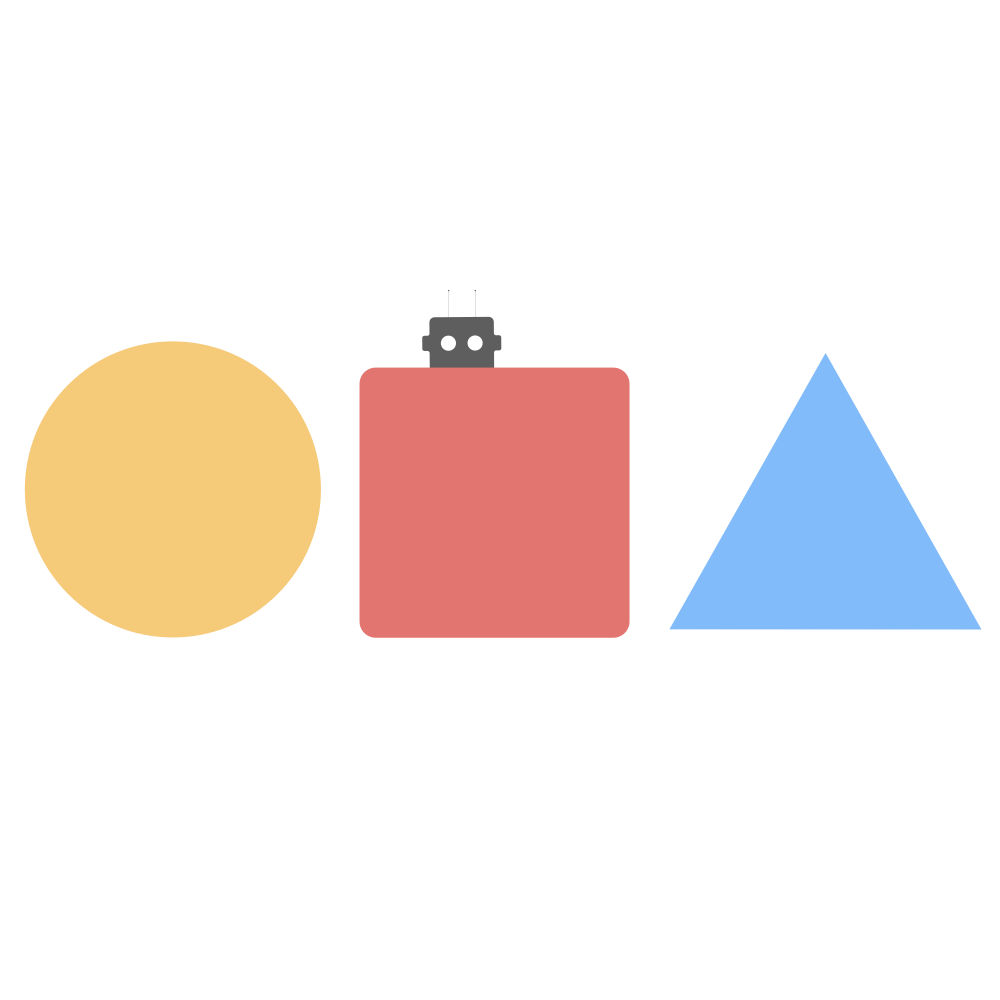「Huggingface🤗NLP笔记系列-第3集」 最近跟着Huggingface上的NLP tutorial走了一遍,惊叹居然有如此好的讲解Transformers系列的NLP教程,于是决定记录一下学习的过程,分享我的笔记,可以算是官方教程的精简版。但最推荐的,还是直接跟着官方教程来一遍,真是一种享受。
- 官方教程网址:https://huggingface.co/course/chapter1
- 本期内容对应网址:https://huggingface.co/course/chapter2/2?fw=pt
- 本系列笔记的GitHub: https://github.com/beyondguo/Learn_PyTorch/tree/master/HuggingfaceNLP
# Pipeline端到端的背后发生了什么
Pipeline的背后:

# 1. Tokenizer
我们使用的tokenizer必须跟对应的模型在预训练时的tokenizer保持一致,也就是词表需要一致。
Huggingface中可以直接指定模型的checkpoint的名字,然后自动下载对应的词表。
具体方式是:
- 使用
AutoTokenizer的from_pretrained方法
tokenizer这个对象可以直接接受参数并输出结果,即它是callable的。具体参数见:
https://huggingface.co/transformers/master/internal/tokenization_utils.html#transformers.tokenization_utils_base.PreTrainedTokenizerBase
主要参数包括:
- text,可以是单条的string,也可以是一个string的list,还可以是list的list
- padding,用于填白
- truncation,用于截断
- max_length,设置最大句长
- return_tensors,设置返回数据类型
from transformers import AutoTokenizer
checkpoint = 'distilbert-base-uncased-finetuned-sst-2-english'
tokenizer = AutoTokenizer.from_pretrained(checkpoint)
2
3
4
先看看直接使用tokenizer的结果:
raw_inputs = ['Today is a good day! Woo~~~',
'How about tomorrow?']
tokenizer(raw_inputs)
2
3
输出:
{'input_ids': [[101, 2651, 2003, 1037, 2204, 2154, 999, 15854, 1066, 1066, 1066, 102], [101, 2129, 2055, 4826, 1029, 102]], 'attention_mask': [[1, 1, 1, 1, 1, 1, 1, 1, 1, 1, 1, 1], [1, 1, 1, 1, 1, 1]]}
可以加上一个 padding=Ture 参数,让得到的序列长度对齐:
tokenizer(raw_inputs, padding=True)
输出:
{'input_ids': [[101, 2651, 2003, 1037, 2204, 2154, 999, 15854, 1066, 1066, 1066, 102], [101, 2129, 2055, 4826, 1029, 102, 0, 0, 0, 0, 0, 0]], 'attention_mask': [[1, 1, 1, 1, 1, 1, 1, 1, 1, 1, 1, 1], [1, 1, 1, 1, 1, 1, 0, 0, 0, 0, 0, 0]]}
tokenizer还有truncation和max_length属性,用于在max_length处截断:
tokenizer(raw_inputs, padding=True, truncation=True, max_length=7)
输出:
{'input_ids': [[101, 2651, 2003, 1037, 2204, 2154, 102], [101, 2129, 2055, 4826, 1029, 102, 0]], 'attention_mask': [[1, 1, 1, 1, 1, 1, 1], [1, 1, 1, 1, 1, 1, 0]]}
return_tensors属性也很重要,用来指定返回的是什么类型的tensors,pt就是pytorch,tf就是tensorflow:
tokenizer(raw_inputs, padding=True, truncation=True, return_tensors='pt')
输出:
{'input_ids': tensor([[ 101, 2651, 2003, 1037, 2204, 2154, 999, 15854, 1066, 1066,
1066, 102],
[ 101, 2129, 2055, 4826, 1029, 102, 0, 0, 0, 0,
0, 0]]), 'attention_mask': tensor([[1, 1, 1, 1, 1, 1, 1, 1, 1, 1, 1, 1],
[1, 1, 1, 1, 1, 1, 0, 0, 0, 0, 0, 0]])}
2
3
4
5
# 2. Model
也可以通过AutoModel来直接从checkpoint导入模型。
这里导入的模型,是Transformer的基础模型,接受tokenize之后的输入,输出hidden states,即文本的向量表示,是一种上下文表示。
这个向量表示,会有三个维度:
- batch size
- sequence length
- hidden size
from transformers import AutoModel
model = AutoModel.from_pretrained(checkpoint)
2
加载了模型之后,就可以把tokenizer得到的输出,直接输入到model中:
inputs = tokenizer(raw_inputs, padding=True, truncation=True, return_tensors='pt')
outputs = model(**inputs) # 这里变量前面的**,代表把inputs这个dictionary给分解成一个个参数单独输进去
vars(outputs).keys() # 查看一下输出有哪些属性
2
3
输出:
dict_keys(['last_hidden_state', 'hidden_states', 'attentions'])
这里顺便讲一讲这个函数中
**的用法:
**在函数中的作用就是把后面紧跟着的这个参数,从一个字典的格式,解压成一个个单独的参数。
回顾一下上面tokenizer的输出,我们发现它是一个包含了input_ids和attention_mask两个key的字典,因此通过**的解压,相当于变成了intput_ids=..., attention_mask=...喂给函数。
我们再来查看一下通过AutoModel加载的DistillBertModel模型的输入: https://huggingface.co/transformers/master/model_doc/distilbert.html#distilbertmodel
可以看到DistillBertModel的直接call的函数是:
forward(input_ids=None, attention_mask=None, ...)
正好跟**inputs后的格式对应上。
print(outputs.last_hidden_state.shape)
outputs.last_hidden_state
2
输出
torch.Size([2, 12, 768])
tensor([[[ 0.4627, 0.3042, 0.5431, ..., 0.3706, 1.0033, -0.6074],
[ 0.6100, 0.3093, 0.2038, ..., 0.3788, 0.9370, -0.6439],
[ 0.6514, 0.3185, 0.3855, ..., 0.4152, 1.0199, -0.4450],
...,
[ 0.3674, 0.1380, 1.1619, ..., 0.4976, 0.4758, -0.5896],
[ 0.4182, 0.2503, 1.0898, ..., 0.4745, 0.4042, -0.5444],
[ 1.1614, 0.2516, 0.9561, ..., 0.5742, 0.8437, -0.9604]],
[[ 0.7956, -0.2343, 0.3810, ..., -0.1270, 0.5182, -0.1612],
[ 0.9337, 0.2074, 0.6202, ..., 0.1874, 0.6584, -0.1899],
[ 0.6279, -0.3176, 0.1596, ..., -0.2956, 0.2960, -0.1447],
...,
[ 0.3050, 0.0396, 0.6345, ..., 0.4271, 0.3367, -0.3285],
[ 0.1773, 0.0111, 0.6275, ..., 0.3831, 0.3543, -0.2919],
[ 0.2756, 0.0048, 0.9281, ..., 0.2006, 0.4375, -0.3238]]],
grad_fn=<NativeLayerNormBackward>)
2
3
4
5
6
7
8
9
10
11
12
13
14
15
16
17
18
可以看到,输出的shape是torch.Size([2, 12, 768]),三个维度分别是 batch,seq_len和hidden size。
# 3. Model Heads
模型头,接在基础模型的后面,用于将hidden states文本表示进一步处理,用于具体的任务。
整体框架图:

Head一般是由若干层的线性层来构成的。
Transformers库中的主要模型架构有:
- *Model (retrieve the hidden states)
- *ForCausalLM
- *ForMaskedLM
- *ForMultipleChoice
- *ForQuestionAnswering
- *ForSequenceClassification
- *ForTokenClassification
- ...
单纯的*Model,就是不包含 Head 的模型,而有For*的则是包含了具体 Head 的模型。
例如,对于前面的那个做在情感分析上pretrain的checkpoint(distilbert-base-uncased-finetuned-sst-2-english),我们可以使用包含 SequenceClassification 的Head的模型去加载,就可以直接得到对应分类问题的logits,而不仅仅是文本向量表示。
from transformers import AutoModelForSequenceClassification
clf = AutoModelForSequenceClassification.from_pretrained(checkpoint)
inputs = tokenizer(raw_inputs, padding=True, truncation=True, return_tensors='pt')
outputs = clf(**inputs)
print(vars(outputs).keys())
outputs.logits
2
3
4
5
6
输出:
dict_keys(['loss', 'logits', 'hidden_states', 'attentions'])
tensor([[-4.2098, 4.6444],
[ 0.6367, -0.3753]], grad_fn=<AddmmBackward>)
2
3
4
从outputs的属性就可以看出,带有Head的Model,跟不带Head的Model,输出的东西是不一样的。
没有Head的Model,输出的是'last_hidden_state', 'hidden_states', 'attentions'这些玩意儿,因为它仅仅是一个表示模型;
有Head的Model,输出的是'loss', 'logits', 'hidden_states', 'attentions'这些玩意儿,有logits,loss这些东西,因为它是一个完整的预测模型了。
可以顺便看看,加了这个 SequenceClassification Head的DistillBertModel的文档,看看其输入和输出:
https://huggingface.co/transformers/master/model_doc/distilbert.html#distilbertforsequenceclassification
可以看到,输入中,我们还可以提供labels,这样就可以直接计算loss了。
# 4. Post-Processing
后处理主要就是两步:
- 把logits转化成概率值 (用softmax)
- 把概率值跟具体的标签对应上 (使用模型的config中的id2label)
import torch
predictions = torch.nn.functional.softmax(outputs.logits, dim=-1) # dim=-1就是沿着最后一维进行操作
predictions
2
3
输出:
tensor([[1.4276e-04, 9.9986e-01],
[7.3341e-01, 2.6659e-01]], grad_fn=<SoftmaxBackward>)
2
得到了概率分布,还得知道具体是啥标签吧。标签跟id的隐射关系,也已经被保存在每个pretrain model的config中了,
我们可以去模型的config属性中查看id2label字段:
id2label = clf.config.id2label
id2label
2
输出:
{0: 'NEGATIVE', 1: 'POSITIVE'}
综合起来,直接从prediction得到标签:
for i in torch.argmax(predictions, dim=-1):
print(id2label[i.item()])
2
输出:
POSITIVE
NEGATIVE
2
